Mac Caltrider
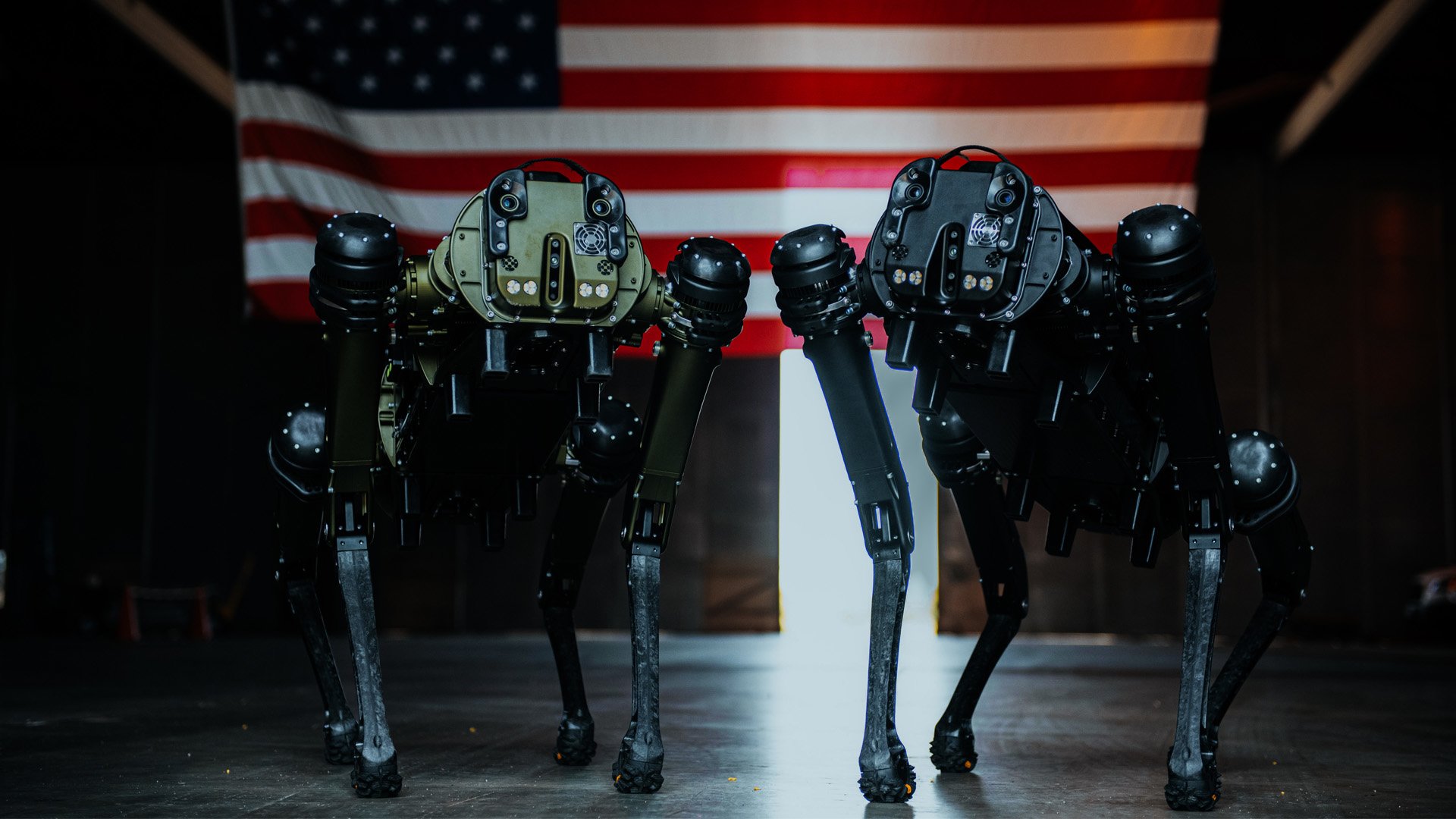
Ghost Robotics Quadruped Unmanned Ground Vehicles (Q-UGV) pose for a photo at Cape Canaveral Space Force Station, Florida, July 27, 2022. US Space Force photo by Senior Airman Samuel Becker.
The New York City Fire Department deployed a robot dog to help look for survivors following a parking garage collapse in Lower Manhattan on Tuesday, April 18, 2023. The remote controlled canine helped confirm the collapse killed one person and injured five more. The search-and-rescue mission marked the first time the department has deployed the robot in a real-world operation. The use of the robot dog doesn’t just herald a new era of civilian search and rescue, it also signals a change in military operations.
The FDNY’s robot — nicknamed Spot for its Dalmatian-like paint job — is a new tool the department purchased from Boston Dynamics last year. It takes a team of three experienced firefighters to operate but eliminates the need to send a human firefighter into certain dangerous environments. According to the robot’s operator, Stephen Millet, Tuesday’s collapse was the exact type of scenario for which Spot was designed.
“Both sides of the building were bowed out. The garage had collapsed from the fourth floor down to the first, leaving all the cars nose down, one on top of each other. It looked like if you sneezed, the whole structure was going to fall,” Millet told Coffee or Die.
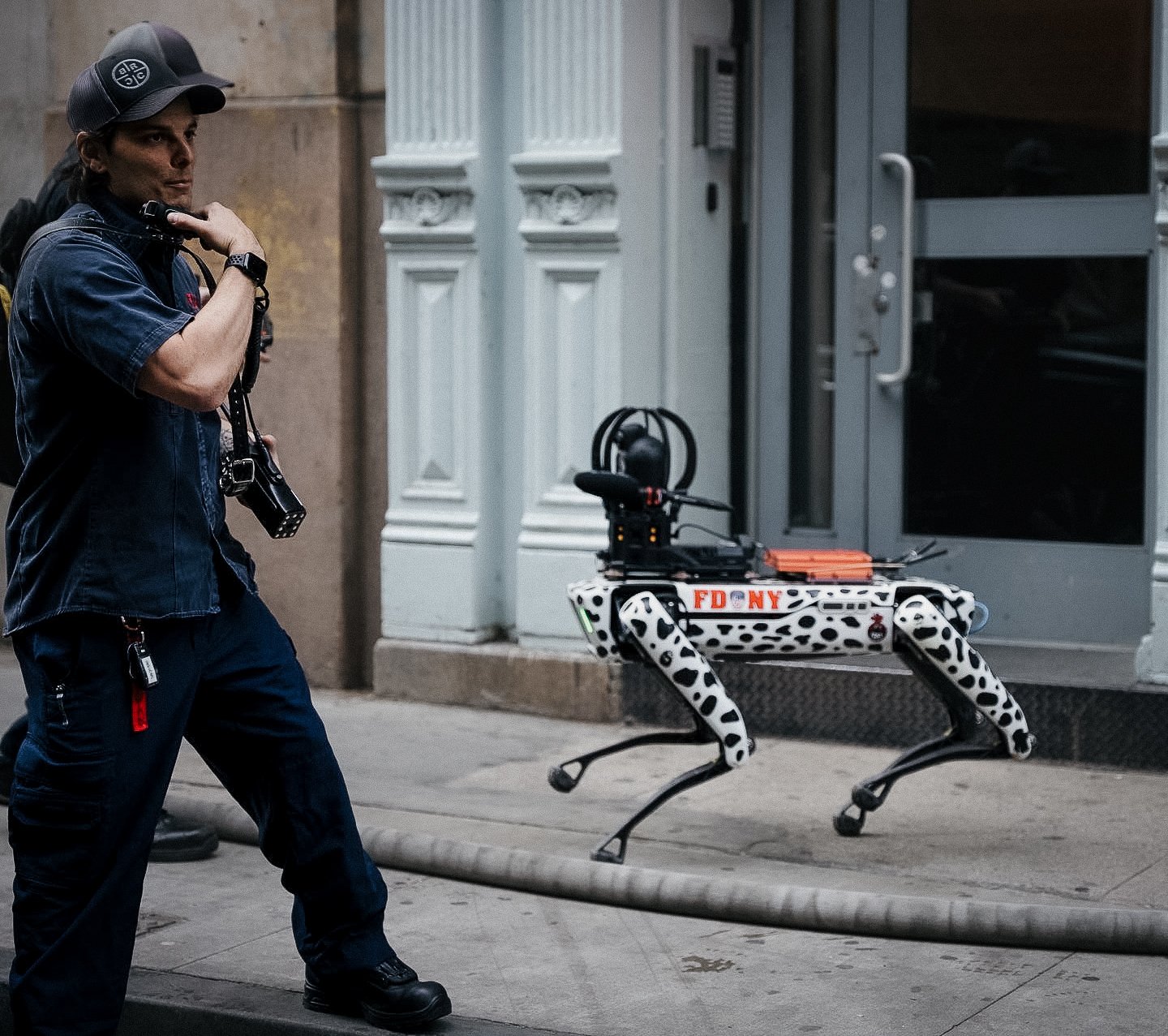
Stephen Millet, a member of FDNY's Robotics Unit, works alongside the department's robot dog, April 18, 2023. Photo courtesy of Stephen Millet.
Robot dogs like Spot come equipped with a 360-degree camera and microphone. This allows rescuers to look and listen inside a collapsed building without having to send a firefighter inside. They can also monitor air quality for hazardous chemicals. Spot passed its first real-world test with flying colors, confirming one person was dead and others were injured without having to immediately send rescuers inside the unstable garage.
“It performed well. It fell, but that's expected when climbing over rubble like that,” Millet said. “Unfortunately, somebody recorded it falling and then stopped recording, but Spot hopped right back up on its own.”
How Much Does A Robot Dog Cost?
Spot, whose real name is Bergh in honor of Henry Bergh, the founder of the Society for the Prevention of Cruelty to Animals, weighs 70 pounds and cost the department $75,000. Even with Spot’s big price tag, New York City Mayor Eric Adams made it clear following the incident that he believes the expensive robot dog is worth its weight in gold.
“I do want to point out that thank God we had the robotic dog that was able to go in the building,” Adams told CBS. “This is ideally what we talk about — not sending a human being inside a building that was unstable.”
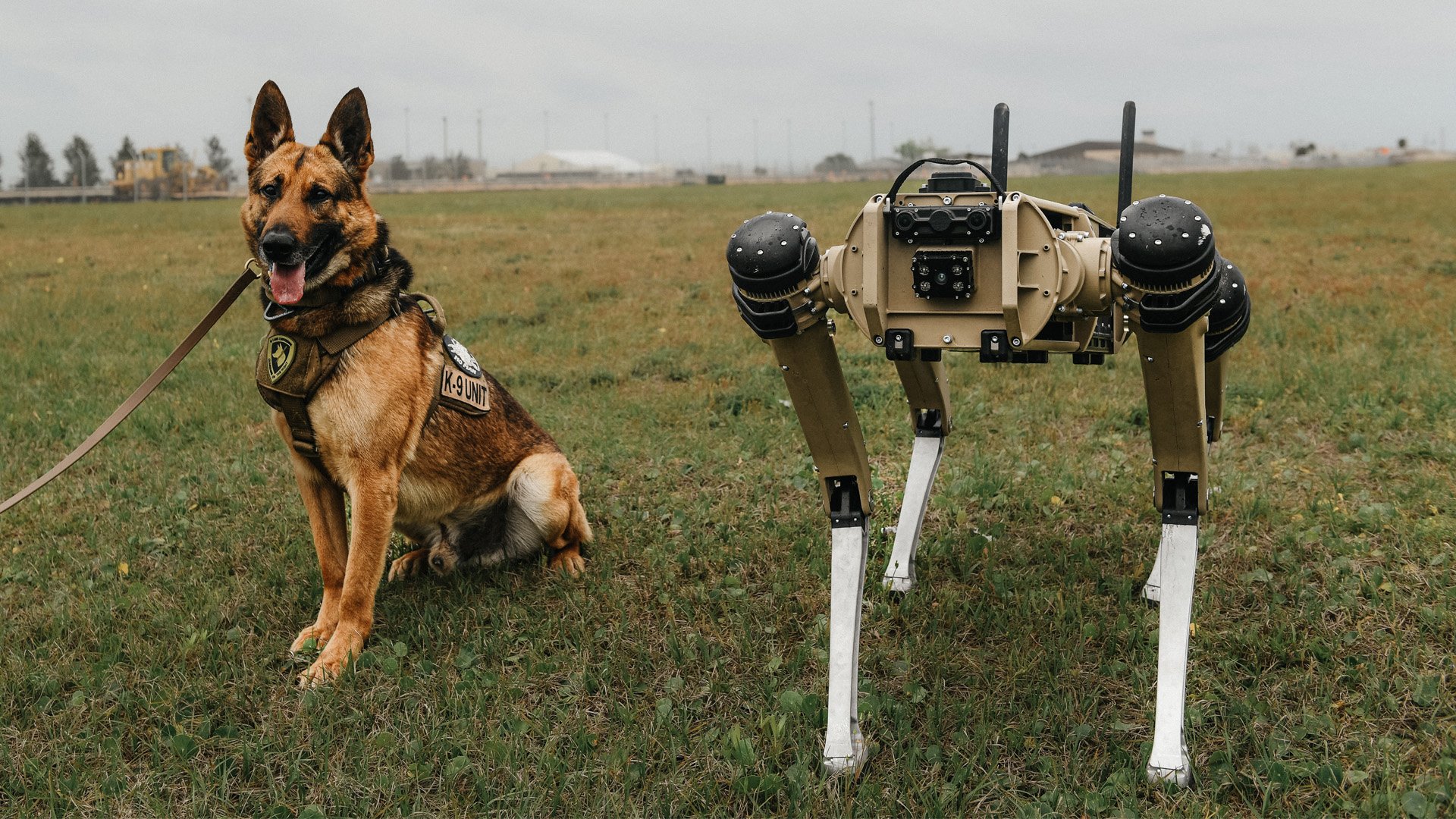
Sunny, a 325th Security Forces Squadron military working dog, poses next to a quad-legged unmanned ground vehicle at Tyndall Air Force Base, Florida, March 24, 2021. US Air Force photo by Airman 1st Class Anabel Del Valle.
The pricey pooch isn’t the only robot FDNY is deploying these days. The 12-man robotics unit also uses drones to gather more complete pictures of scenarios they respond to. Additionally, the unit has a submersible drone.
FDNY is the first fire department to successfully deploy the robot dog, but fire and police departments across the country are beginning to utilize drones. New York’s Finest also deploy drones when responding to complex calls for service.
Will Robot Dogs Replace Firefighters?
New York City firefighters intend to keep using Spot on what they consider “Low-Occurrence, High-Risk Environments.” As proven during last week’s collapse, the robot dogs can be extremely useful when firefighters are faced with a rare but complicated scenario like a garage collapse.
“Spot works well when it's something really bad, like radiation, chemicals, or a collapse,” Millet said. “It’s built for a scenario where you don't want to send a fireman in to be a canary in a coal mine.”
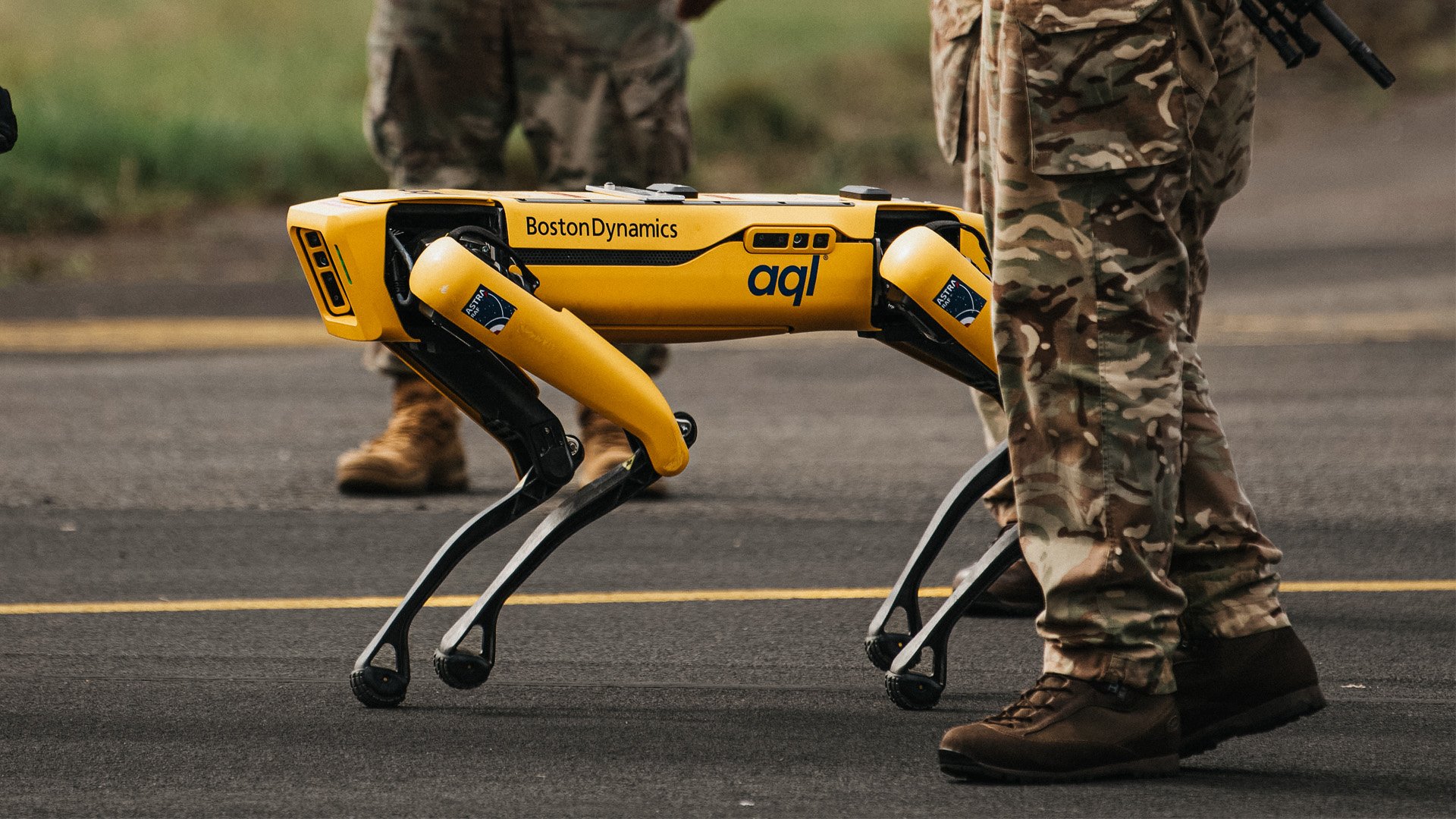
An RAF Leeming Airman interacts with a new Boston Dynamics Spot robot during Agile Liberty 21-2, Aug 25, 2021. US Air Force photo by Senior Airman John Ennis.
The FDNY’s firefighting philosophy still hinges on human firefighters. Millet said their core mission is to extinguish fires by way of an aggressive interior attack — i.e., sending men armed with charged hoses into the fray. For this reason, robot dogs will not replace human first responders. Rather, the robots are another tool for firefighters to use at their discretion — no different than a hose or a halligan.
“It’s not going to take the place of a human. There’s never going to be a replacement for a fireman,” Millet said.
Robot Dogs Will Fight the Next War
Robot dogs will never fully replace soldiers either, but recent developments prove they can also be an invaluable tool to warfighters.
Military robot dogs, known officially as quadrupedal unmanned ground vehicles (Q-UGVs), have worked alongside American service members for the last three years. The first models, made by Ghost Robotics, arrived at Tyndall Air Force Base in 2020 to provide perimeter security. They have since become common features at Air Force bases around the country.
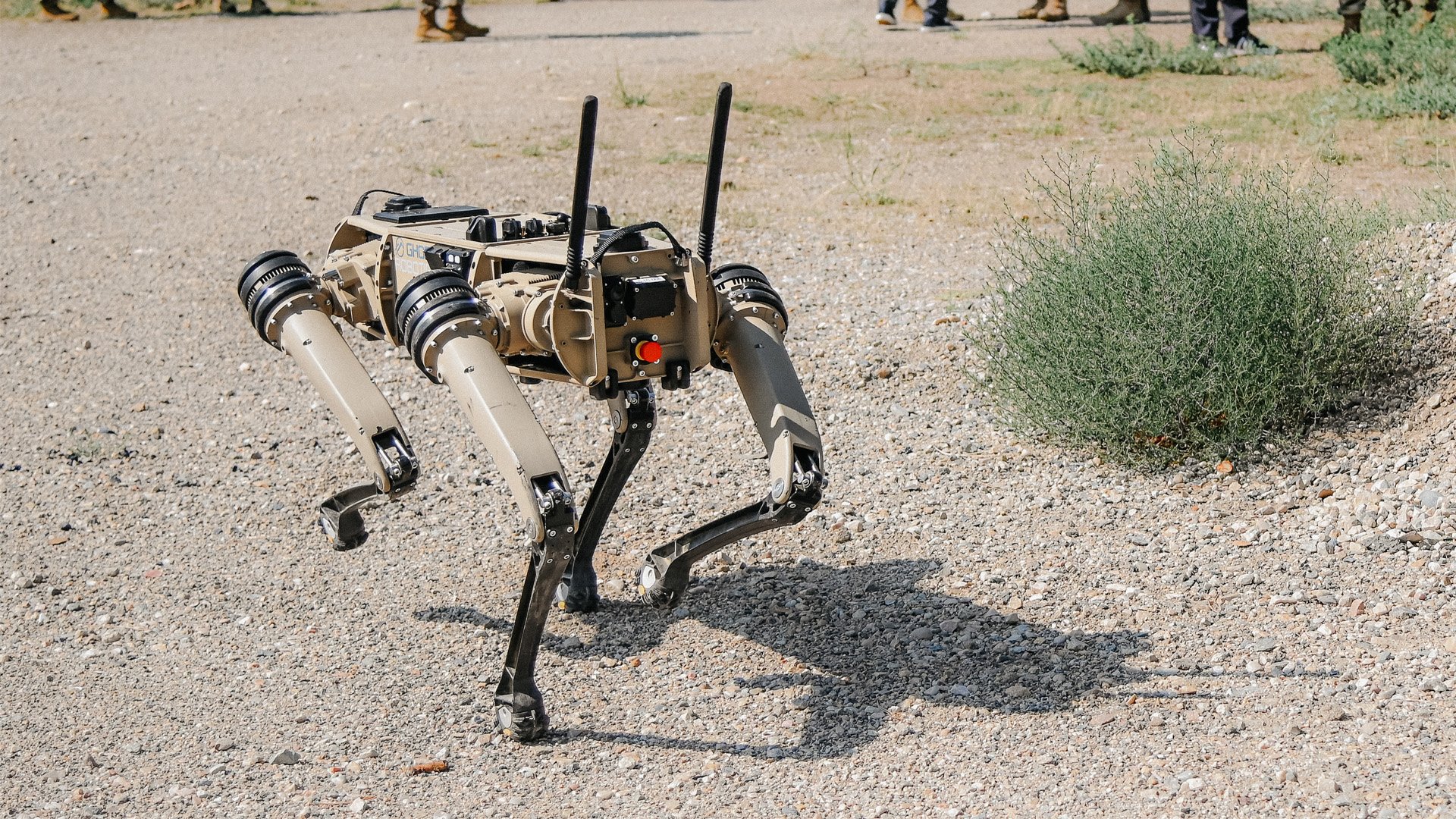
Airman 1st Class Josh Suarez, 75th Security Forces Squadron, operates a quad-legged unmanned ground vehicle, also known as a robot dog, during a demonstration on Aug. 24, 2021, at Hill Air Force Base, Utah. US Air Force photo by Cynthia Griggs.
Like their civilian counterparts, military robot dogs provide troops with an extra set of eyes and ears. The four-legged droids can perform tasks like reconnaissance and surveillance, eliminating the need to put humans or real dogs in unnecessary danger.
“This is the type of change that we should all strive for,” said Lt. Col. Ryan Barton, commander of the 142nd Security Forces Squadron, in an interview last April. “Maybe not a robot dog, but to find things that humans don’t necessarily need to do or don’t do well and incorporate technology or some version of innovation to free up manpower while also enhancing capability.”
Quadrupedal robots are the next step in the evolution of military robotics. As proven in last week’s garage collapse, four-legged robots are capable of navigating uneven terrain that tracked and wheeled robots — like those often used for explosive ordnance disposal — cannot.
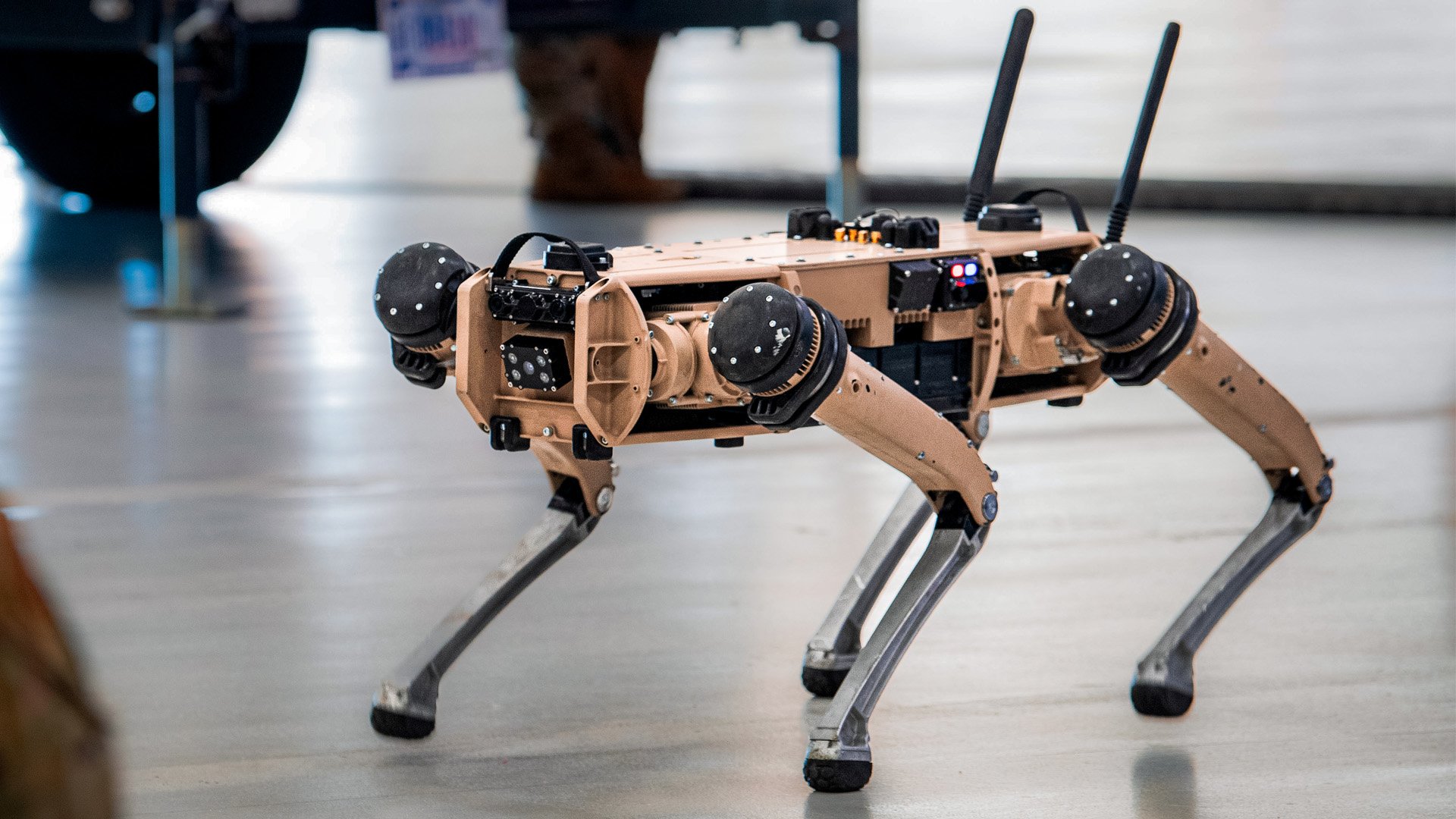
A quad-legged unmanned ground vehicle (Q-UGV) is displayed during an all-call at Tyndall Air Force Base, Florida, on April 20, 2021. US Air Force photo by Senior Airman Jacob Dastas.
While robot dogs remain focused on things like surveillance, airmen are experimenting with more combative roles. During a 2020 training exercise that saw airmen practice seizing a hostile airfield, robot dogs equipped with sensors provided real-time targeting information to assets on the other side of the country.
Combative roles for robot dogs are still in the experimental phase, but if the speed at which drones transitioned from being surveillance tools to delivering munitions in the war in Ukraine, robot dogs will be an invaluable force multiplier in future conflicts.
No comments:
Post a Comment